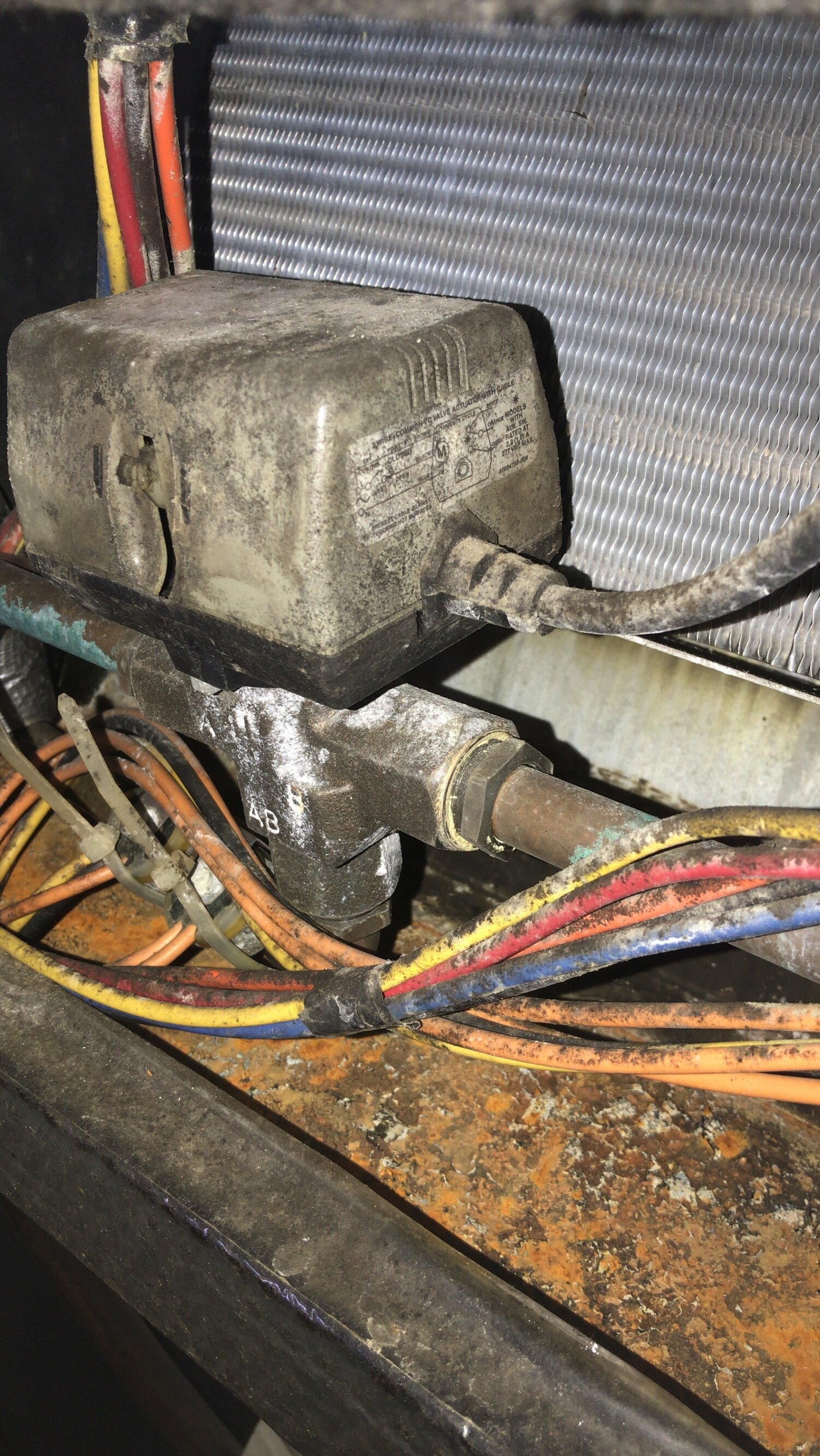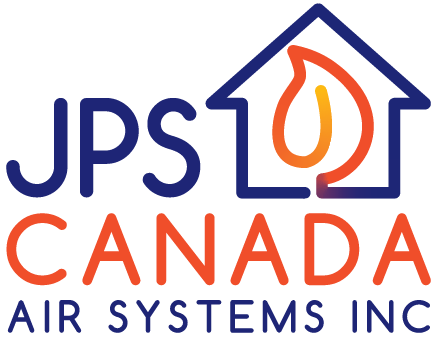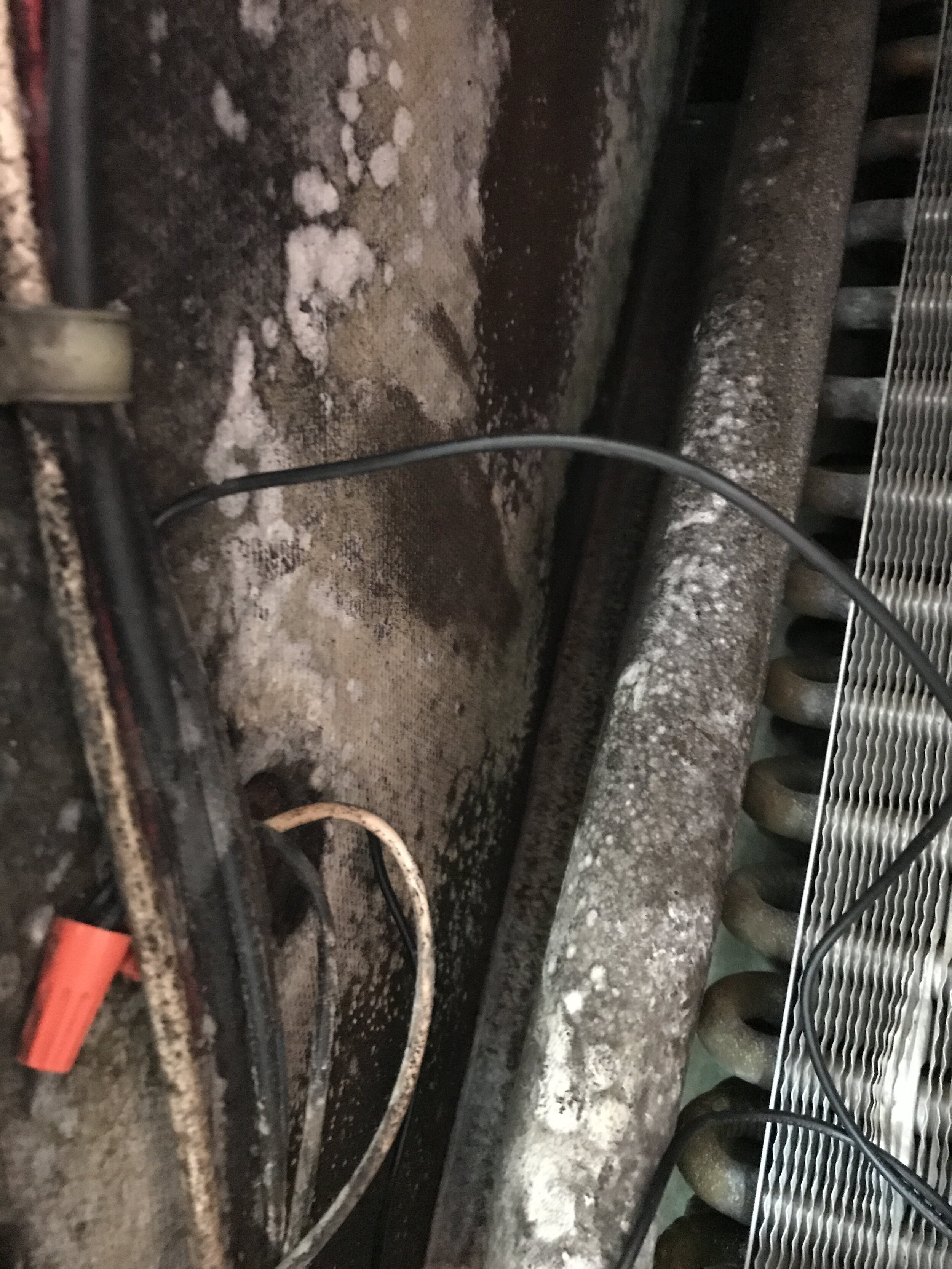What is Fan Coil Mold Growth?
Vertical Fan Coil units use conditioned water to heat, cool and ventilate living spaces–and to get the job done, that water must pass through a series of valves and connection points. Additionally, since condensation is a natural byproduct of the process, all condensation must be captured by a condensate drain pan located within the HVAC unit.
If all of these elements are working well, mold should not be an issue. Problems arise, however, when units are not properly maintained – or when failing valves or corroded condensate pans are not replaced in time. It is at this point the insulation lining the inside of the fan coil unit transforms into a breeding ground for mold colonies which, if left unattended, can spread to surrounding drywall and flooring.
At JPS Canada, all of our technicians are trained and certified to assess and remediate mold originating from fan coil units in high-rise buildings. We identify whether a situation warrants a simple cleaning treatment, insulation removal, total unit replacement or a fan coil retrofit – and then we take steps to contain and clean existing mold, as well as specific measures in order to minimize the recurrence of future mold growth.

We Offer Free Fan Coil Mold Assessments in the GTA
Understanding Fan Coil Mold Remediation
Navigating the world of mold remediation can be difficult – largely because this space is unregulated in Canada. If you suspect mold growth inside or around your high-rise fan coil unit, it can be helpful to keep the following facts in mind before hiring a professional:
Health Risks
While mold spores are inevitably present everywhere, they can become a health risk when damp or moist indoor conditions enable them to germinate and colonize. This may result in a range of conditions – from a mild stuffy nose to difficulty breathing.
Regulations
In Canada, there are no federal regulations around mold – and Health Canada does not classify mold as a hazardous material. Reputable mold professionals should have the appropriate certifications, qualifications as well as environmental and pollution insurance specifically citing mold remediation (this should be in addition to general liability insurance.)
Professional Certification
While there is no authority that licenses mold remediation, reputable mold remediation workers should be able to offer proof of certification for mold awareness and remediation training. Membership with the Environmental Abatement Council of Canada (EACC) is reassurance they are professionals.
Assessments
A thorough mold assessment should involve identifying the source of the mold, observing how far it has spread, and developing a scope to remediate. If the mold is visible, testing is not necessary.
Testing
While mold sampling and reports may sound impressive, this is often an unnecessary step (and expense). If it is visible to the eye, remediation will be the same–regardless of mold type. It’s the quantity of the mold that determines the remediation plan.
Removal Guarantees
Completely removing all mold from a home or business is impossible, as microscopic mold spores exist everywhere. If a company guarantees complete mold removal rather than mold remediation, take it as a red flag.

CDC Report: Learn the Facts about Mold and Dampness
The JPS Canada Difference
Below are just a few ways our mold remediation services stand above the rest:
Certification
We are proud to be the only fan coil company invited to be a member of the Environmental Abatement Council of Canada (EACC), which is considered the highest professional standard in the Canadian environmental abatement and hazardous materials industry. Our membership ensures we adhere to the latest mold assessment and remediation best practices, and are equipped with environmental and pollution insurance.
Training
All of our technicians and office staff are regularly retrained and recertified on mold and asbestos identification, containment and remediation, as well as on proper cleaning and disinfecting of viral pathogens. So whether you are calling our office with a mold-related question – or entrusting us to conduct an in-suite assessment–you can rest assured your JPS Canada representative is both knowledgeable and qualified to address the task at hand.
Containment
While plastic sheeting is commonly used as a mold containment measure, the truth is it does not provide a sufficient barrier to prevent mold and other viral pathogens from spreading throughout a living space. That is why all our mold remediation projects include the use of a certified containment tent–a sealed enclosure that uses a negative air vacuum, or air scrubber, as well as a HEPA filtration system.



















